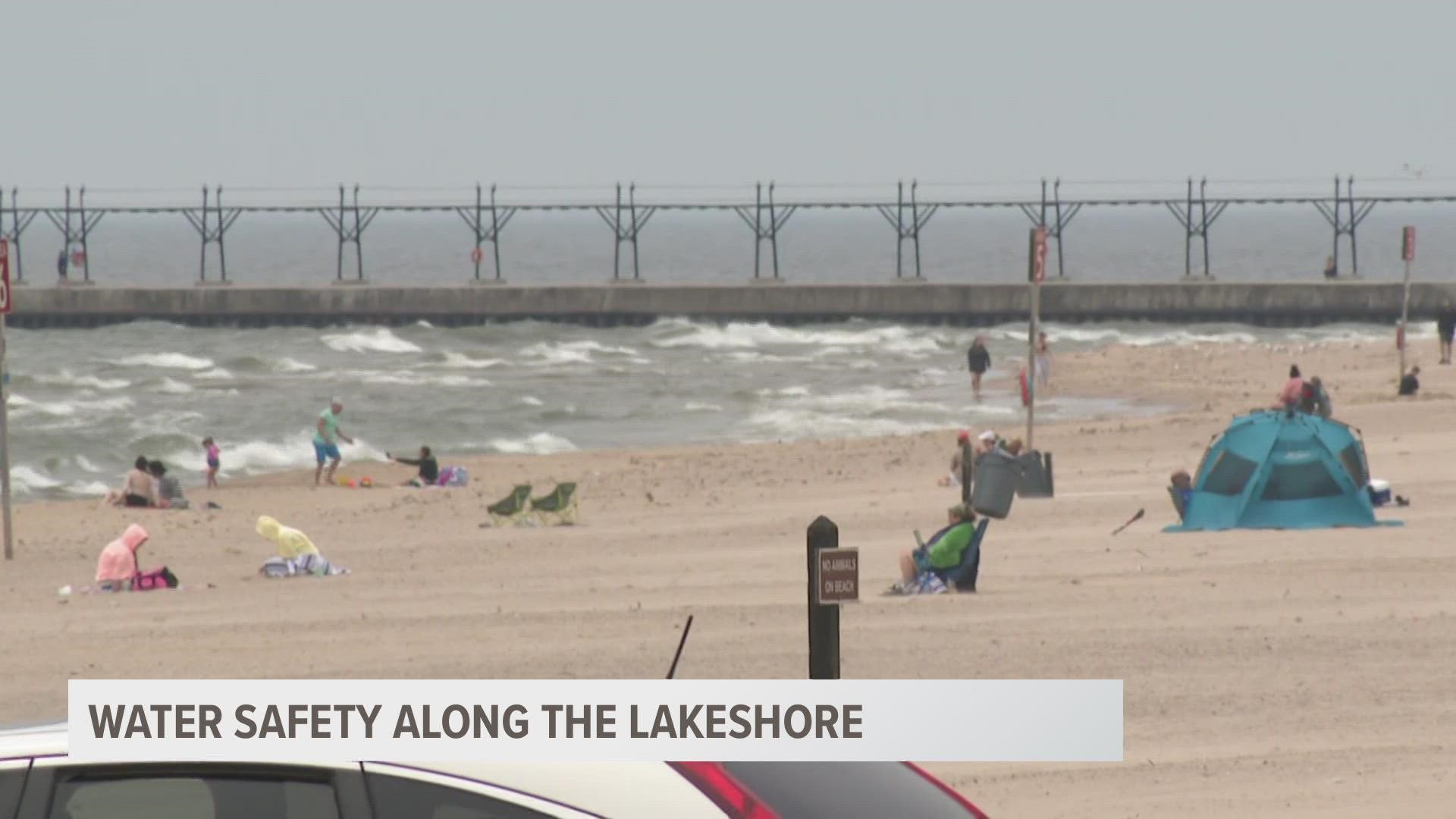GRAND HAVEN, Mich. — Four people were rescued from Lake Michigan in Grand Haven on Memorial Day. Across the state, four are believed to be dead, including a 6-year-old girl, from drownings over the holiday weekend.
Officers responded to two swimmers calling for help in Grand Haven. According to the Department of Public Safety (GHDPS), beachgoers formed a human chain to help rescue the swimmers. Two of those people in the chain then also needed rescuing from the water.
Water safety experts advise against bystanders jumping into the water to help save someone.
"We completely understand the folks on the beach want to help," said Lt. Ryan Enlow with GHDPS, "and we commend them for that attitude and determination. But it does happen quite a bit where we have two people who need help, bystanders assist, and sometimes those bystanders get in trouble themselves."
Red flags, which were flying Tuesday in Grand Haven, mean do not go in the water. Wind, waves and current condition make it dangerous for swimmers.
"We want people to have a good time on the beach," said Enlow, "but it's very dangerous when you combine unfavorable wind and very cold water."
Meanwhile, the Michigan Department of Natural Recourses (DNR) has a new tool this year to keep people safe in the water. Under a land use order, they have the authority to close access temporarily in a state park if conditions are deemed too dangerous.
"Sometimes, there's severe weather, there's very big waves, there's a number of things on that regard," said Ron Olson, Chief of Parks and Recreation with the DNR, "But also, there's sometimes, unfortunately, there's contaminated water due to sewer overflows and things like that."
Olson said the land use order was effective as of May 1, 2022. They have yet to use it, mostly he said due to cool water temperatures.
Those cooler water temperatures can also cause challenges for swimmers.
"If you were to dive in headfirst into cold water, it can cause cold water shock," said Dave Benjamin, executive director of the Great Lakes Surf Rescue Project, "which causes a hyperventilation gas reflex, which someone could just dive in, and they don't come up because they inhale immediately and that's it."
Benjamin said as of Memorial Day, drownings on Lake Michigan have gone up 71% since the same date last year. He said most drownings happen when there is moderate conditions, with waves only between two and five feet.
It's because of that his group is critical of the flag warning system used at most Michigan beaches.
"We're focusing at the wrong points," said Benjamin, "Saying, 'hey, let's wait until it's eight feet waves, when two to five feet is when the most drownings will happen.' So, it's completely missing the mark."
He believes lifeguards are the gold standard for water safety, and would like to see them on West Michigan beaches. He has been working for years to implement them, but said he is met with arguments about liability, lifeguard shortages and funding from the state.
"You can't say there's a shortage for Lake Michigan lifeguards when you terminated the program when there was plenty of lifeguards," said Benjamin, referring to a program that ended in the 1990s.
Grand Haven also has as life ring system on its pier. When the life rings are released, they trigger an alarm and 911 call to first responders. Enlow said they have been working very well, and combined with pier cameras, they are able to respond quicker.
Rip currents are also common along Lake Michigan's shore. Enlow said if you find yourself in a rip current, do not fight it. Instead: Flip, Float and Follow. That means flip over onto your back, float and follow the current.
RELATED VIDEO: Explainer: Beach flags and what they mean
►Make it easy to keep up to date with more stories like this. Download the 13 ON YOUR SIDE app now.
Have a news tip? Email news@13onyourside.com, visit our Facebook page or Twitter. Subscribe to our YouTube channel.

